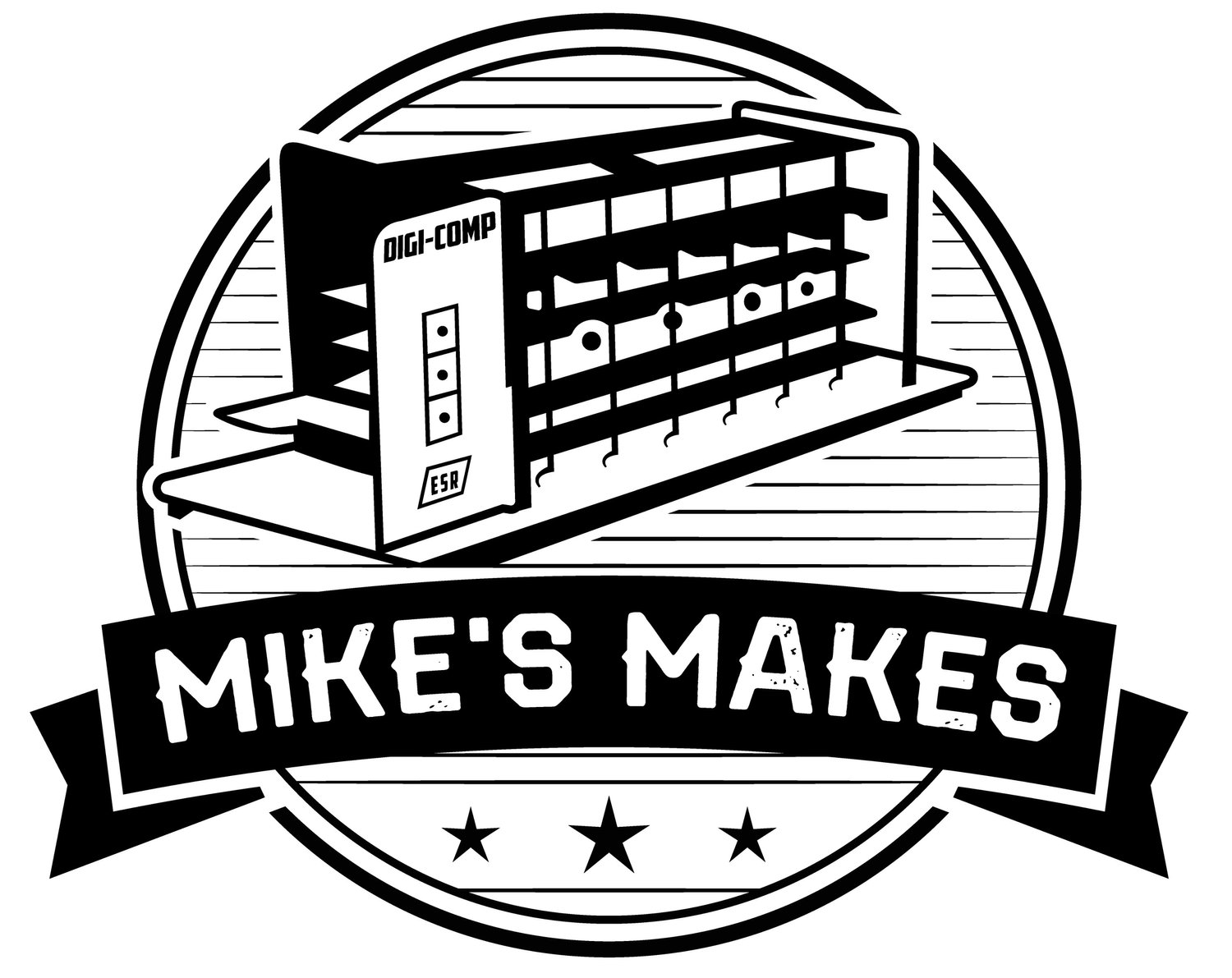GENIAC (Genius Almost-automatic Computer)
My completed GENIAC with manuals.
Manufactured By: Edmund Berkeley, with Oliver Garfield
Designed By: Edmund Berkeley, with Oliver Garfield
Release Date: 1955
GENIAC, which stood for "GENIus Almost-automatic Computer", was an educational toy billed as a "computer" sold from 1955 through the sixties for about $20. Designed and marketed by Edmund C. Berkeley, with Oliver Garfield, it was widely advertised in science and electronics magazines. GENIAC provided many youths of the day with their first exposure to computer concepts and Boolean logic.
Sold as a kit, GENIAC consisted of a Masonite back panel with six areas of concentric perforations, six similarly perforated Masonite disks, and some additional hardware including wire, light bulbs and sockets, brass bolts and nuts, battery with holder, and an on/off blade switch.
Slotted brass bolts were positioned on the main back panel in such a way that brass "jumpers" inserted into the underside of the Masonite disks would create electrical connections when the disks were rotated over them. The bolts were wired together along with a battery and some lights to create "programs", basically single purpose "machines".
Technically GENIAC was a collection of configurable N-pole by N-throw rotary switches, which could be set up to cascaded and thus perform logical functions. As a result GENIAC could use combinational logic only, its outputs depending entirely on inputs manually set. However, projects outlined in the manual, which started with basic logic circuits, ultimately progressed to such things as a NIM machine and TIC-TAC-TOE machine.
I probably would not have attempted this project had I not had access to a laser cutter at my local makerspace Kwartzlab. So many little holes. I laser cut one Main Board and six Switch Tops as seen in the photo above. I used 1/8 inch (3 mm) hardboard.
3D printed jumper used to to replace the brass jumper from the original.
I couldn’t find the brass "jumpers" used in the original so I created a 3D printed substitute that worked quite well.
Just for fun I created a version I called GENIAC Redux. The brass bolts were replaced by magnetic reed switches and the jumpers with magnets. Additional magnets were employed to create the "detents" or "stops" to make sure that the reed switches and magnets align at the proper positions. I used "markerboard", hardboard with a dry erase surface on one side, for the base and switch disks.
GENIAC Redux using magnets and reed switches.
There was a lot of hyperbole in the marketing literature for GENIAC:
The devices you can build test intelligence, code and decode, count, play Tic-Tac-Toe, solve problems, and now compose music!
I mean they called it an Electric Brain. That sets a pretty high bar. I'm sure that there were many eager recipients that were disappointed with the reality of GENIAC. However, the kit as sold was not without its merits. Since it did not require soldering and was battery powered it was accessible to a large audience, especially children say 12 and older. GENIAC was certainly a reasonable tool for teaching electric circuits, Boolean logic, as well as binary and decimal arithmetic. Without a doubt GENIAC was an important early (1955) step on the road to general computer literacy.
As with my other replica projects my goal here is to shed some new light on an important part of our non-digital computer related past. Kudos to Edmund C. Berkeley and Oliver Garfield for their work. I'm sure that GENIAC helped to set a significant number of young people on the road to computer related careers.






